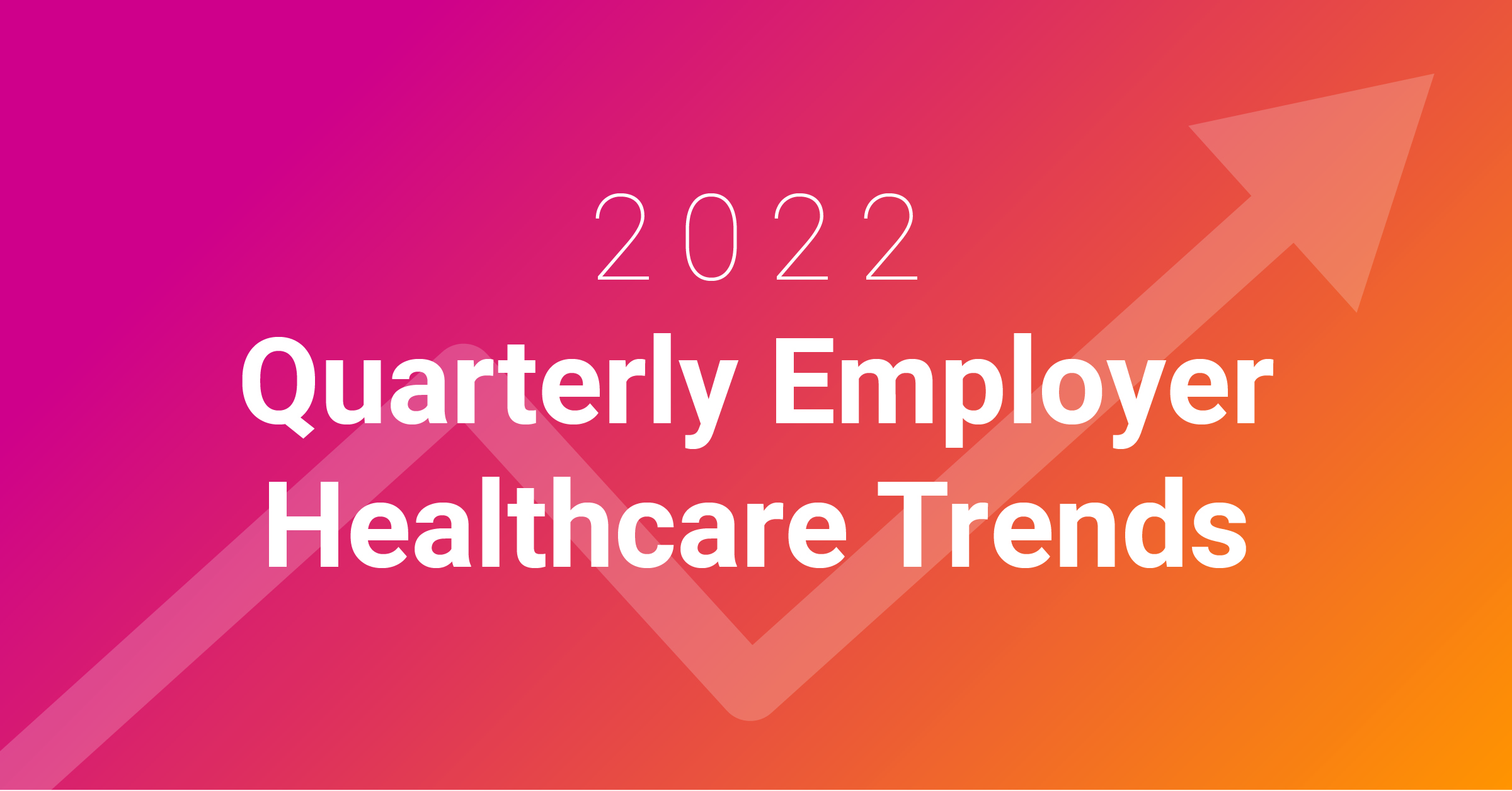As employers navigate seismic changes brought on by the pandemic, we’re seeing some new healthcare workforce trends take shape.
Notably, employers are focused on overcoming physical and mental health stigmas, integrating occupational health into existing care models, encouraging employees to seek preventive services and re-evaluating their EAPs to best serve their workers.
Read on to learn more about the key healthcare workforce trends impacting employers in Q3 of 2022.
Annual Physicals Ramp Up
Preventive care proves key to fostering a healthy and productive workforce, not to mention keeping health plan spending in check.
As part of new workforce healthcare trends, we’re seeing many employers include annual physicals as a component of their health incentive programs. Now’s the time to amplify employee messaging on the importance of completing an annual exam and communicate options for scheduling the visit by the end of the year.
Annual physicals include a comprehensive exam of the employee’s health history, current medications, lifestyle, and vaccination status, and also screen for chronic diseases such as diabetes, high blood pressure, elevated cholesterol, asthma and cancer.
“The value of using an annual physical examination in an incentive program is that practitioners have the opportunity to catch health issues before they become bigger and are harder to control,” says Dr. Terry Layman, Senior VP and Corporate Medical Director at Marathon Health. “When conditions go untreated, that’s going to cause employees to make more trips to the ER and take more time off work, which is going to be costly for their employer.”
Occupational Health Moves Onsite as New Workforce Trend
Following the rise of onsite behavioral health support, employers are integrating occupational health services into existing primary care programming to address workplace injuries and increase employee engagement with needed services.
When combined with a comprehensive primary care program, employees can seamlessly address occupational health concerns with their onsite care team, while employers can save money by preventing expensive trips to the ER or urgent care.
Occupational health services can provide:
- Physical therapy
- Work injury evaluation and treatment
- Workers’ compensation support
- Vaccine administration
- DOT, public safety, pre-employment, and return-to-work physicals
- Respiratory surveillance programs
- Drug and alcohol testing
“One of the advantages is that we have a physical therapist onsite,” says Larry Vandermolen, Physician Assistant with Marathon Health and Head of Occupational Health Services at Finish Line’s onsite health center. “If I determine an employee’s injury should be treated with physical therapy, I can schedule an appointment so they can start therapy right away. I can also consult with the therapist on how they’re progressing.”
Reducing stigmas around wellness screenings and behavioral health
Recent studies show a surprising level of employees bypassing needed health services and mental health support due to perceived stigmas.
In fact, more than half of adults with mental health conditions don’t receive help for their needs out of fear of societal and institutional stigmas, while 40% of full-time employees report bypassing physical health services due to feelings of shame and embarrassment.
“I think the main stigma comes around behavioral health,” says Silvia Madrigal, Family Nurse Practitioner and Marathon Health Regional Clinic Leader. “There’s still that stigma of, ‘If I say I’m depressed, I’ll be labeled with a handicap or as someone who can’t cope with life.’”
These stigmas exacerbate existing health conditions and significantly increase the risk of missed detection of preventable illness and late-stage diagnoses. Considering how surveys show workers trust their employers as a top source for obtaining accurate health information, employers need to actively combat health stigmas, such as:
- Regularly engage employees about available health services, including behavioral health
- Communicate the benefits of preventive care
- Provide clear and consistent information and stamp out misinformation
- Survey employees about health needs and concerns, taking into account social determinants of health
- Ensure equitable access for all employees by eliminating barriers to care
Re-evaluating EAPs to Address Behavioral Health
Employer-sponsored behavioral health services continue to grow as more organizations offer counseling as part of their employee assistance programs (EAPs) to address job-related stress, family stress, generalized anxiety, depression and substance abuse.
Traditionally, EAPs connected employees to high-level counseling services with a predetermined number of visits. Now, we’re seeing employers re-evaluating the quality of these services and partnering with organizations that provide relationship-based, comprehensive behavioral health services.
Employers should work with an EAP that provides reporting to identify challenges impacting employee populations, integrates behavioral care into primary care and wellness services, allows unlimited visits with a behavioral health specialist and includes convenient access to 24/7 virtual care.
Another trend with EAPs is employers providing benefits to promote healthy lifestyles, such as discounts on meal kits, fitness programs and apps, and childcare.
You might also like
Subscribe to our newsletter and stay on the cutting edge of worksite healthcare.









